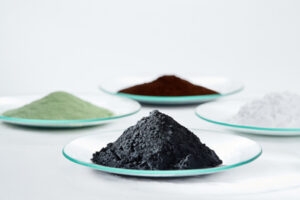Smithers identifies four key technology pathways to sustainable carbon black
Akron, OH – Tire OEMs and other users of carbon black are increasingly looking for alternative, more environmentally friendly material choices. As an industry that currently relies almost exclusively on petroleum feedstocks, and energy-intensive furnace black processing; this poses a major challenge for carbon black suppliers over the next 20 years.
In its brand new technology report, The Impact of Sustainability on Carbon Black to 2041, Smithers identifies and profiles the four leading platform technologies that will enable this transition. Adoption will increase the array of greener material options available in multiple segments – most notably tires and other rubber goods where carbon black has long been employed as a cost-effective filler. In 2022, Smithers data show demand for fillers in tires will reach 13.9 million metric tonnes; making it the leading end-use market.
The four leading pathways to sustainability in carbon black identified by Smithers are:
Methane Pyrolysis is an alternative to furnace black manufacturing, and a demonstration line is already in operation. This is less energy-intensive than furnace black processing, and while pilot lines are configured to use natural gas as an input, there is potential to evolve the technology to also work with bio-gas or bio-methane. For end-users the main requirement beyond scale up is for refinements to allow methane pyrolysis to produce harder, more durable carbon black grades.
Recycling tires to source Recovered Carbon Black (rCB) is an increasingly popular option – rCB is the preferred sustainability option for 65% of tire OEMs for the future. It can be up to 85% less carbon intensive than furnace black to manufacture, and does not require direct petroleum inputs. Recovery and preparation of rCB requires thermal processing, meaning it will never be fully carbon neutral, however. Further work is still necessary to establish specifications and quality control; and the current generation of rCB technology will need to be improved to produce harder blacks.
Renewable Carbon Black is made by substituting petroleum feedstocks for biogenic material, typically wood. It uses existing furnaces with minimal modification and can produce a conventional range of harder blacks. Commercial supply has now begun with one manufacturer. The major flaw with this approach is cost. Prices five to ten times those of conventional carbon blacks make this an unrealistic option for the mass-market.
The final option is Circular Carbon Black, a solution that again capitalises on the availability of end-of-life materials. Unlike rCB processing this requires the intermediate step of having the used tires or polymers rendered down into pyrolysis oils first.
Circular carbon black still produces carbon emissions, but energy use is much lower than for conventional carbon black furnace processes. It can produce high-performance reinforcing grades; but cost will be a major barrier, at least double those of conventional furnace operations.
All four solutions will continue to evolve over the next two decades, meeting the competing demands of lowering costs and improve the quality of blacks produced. Combined it is estimated that by 2041 these will contribute 1.98 million tonnes to global supply of carbon blacks, the equivalent of around 20 conventional carbon black furnace lines.
Tracking the route to market for each these from pilot-level production to mass-market use is mapped authoritatively in the Smithers study The Impact of Sustainability on Carbon Black to 2041. With extensive research and market analysis this is contextualised within a deeper examination of the changing commercial landscape for carbon black and its core end-use industries, as well as future trends in supply for oil and other alternative feedstocks.

